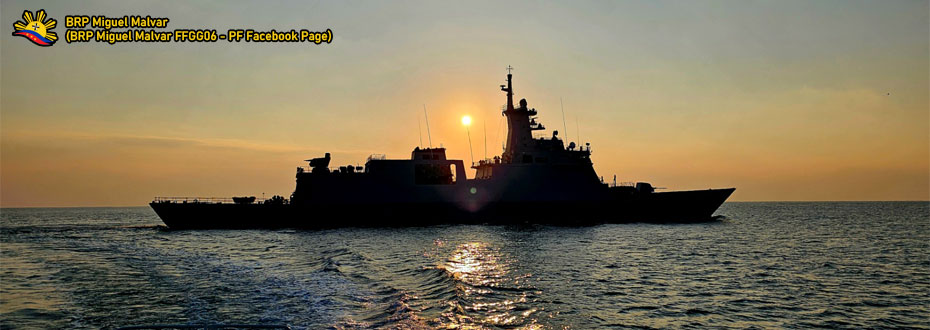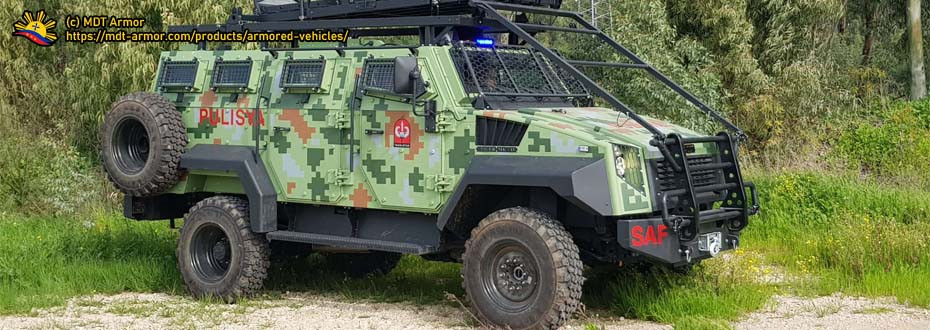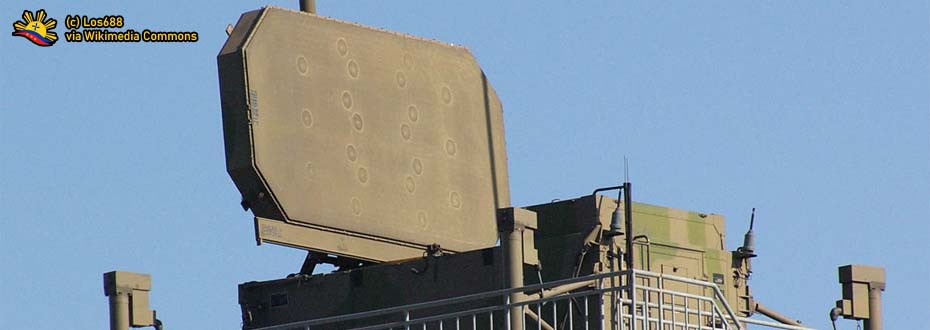The discussion for the Offshore Patrol Vessel acquisition project of the Philippine Navy took several rounds before across multiple defense groups and communities, including here on Pitz Defense Analysis. And most of the discussions during that period pointed to the deal made by Austal, an Australian-based shipbuilding firm, to build such naval assets in the country through their shipyard in Balamban, Cebu.
Many things have changed since then, with the leadership from the Department of National Defense, as well as those within the Philippine Navy, changed the preferred supplier and instead go to a shipbuilder who has the record of building warships to the naval branch of the Philippine Armed Forces, the shipbuilder who also built the Jose Rizal-class Frigates now in active service.
INTRODUCTION
 |
| The design of the future Offshore Patrol Vessels that Hyundai Heavy Industries offered to the Philippine Navy. (c) Hyundai Heavy Industries |
The Philippine Navy and the Department of National Defense are now inching closer to complete the deal, hoping that the Php 30 Billion worth of the allotted budget for the contract pertaining to the construction of six offshore patrol vessels for the fleet will get signed before the exit of the current administration, upon setting the new term for the new administration by July 1, 2022.
The deal with the South Korean shipbuilder Hyundai Heavy Industries includes a single Pohang-class Corvette that was recently retired from the South Korean Navy, adding up to the number of such vessels in the Philippine Navy, itself currently comprises by the former ROKS Chungju (PCC-732), now named as BRP Conrado Yap (PS-39), which may get added more by the former ROKS Andong (PCC-771) entering the fleet.
This news came as the South Korean shipbuilding firm has secured another deal with the Philippine Navy before the decision for the Offshore Patrol Vessel acquisition project, in which they are also obliged to deliver two HDC-3100 Corvettes under the Php 28 Billion Corvette Acquisition Project (US$547 Million) of the said same military branch, wherein its design is an improved variant over the HDF-2600 or the Jose Rizal-class Frigates.
Previously, the Philippine Navy and the Department of National Defense were almost determined that the Offshore Patrol Vessel Acquisition Project would award to the Australian shipbuilding firm Austal, with the provisions include building it in their shipyard in the country, in Balamban Cebu. However, the project has found out to be far more costly, amounting to Php 12 Billion of overrun than the intended budget allotted.
The said overrun has pointed out because of Austal's Value Added Tax or VAT considerations in the overall computation for this acquisition project of the Philippine Navy, making it fallen out of favor to the two other competitors, namely the Turkish arms contractor and exporter ASFAT with their own Offshore Patrol Vessel design, and South Korea's Hyundai Heavy Industries who is the preferred supplier for the project.
Hyundai Heavy Industries' win for the Offshore Patrol Vessel acquisition project will further cement their foothold in the Philippine Defense market, specifically to the naval sector wherein they have provided two other big-ticket acquisition projects coming from the Philippine Navy, namely the Frigate Acquisition Project and the current work-in-progress Corvette Acquisition Project.
With this acquisition project now set to stone as another big ticket project of the Philippine Navy under the second horizon, let us discuss in-depth about the shipbuilder (which was not discussed before), the overview for its other acquisition projects that were provided to the Philippine Navy, the specifications of the Offshore Patrol Vessel design and its comparisons to the offers made by Austal for this project.
HYUNDAI HEAVY INDUSTRIES' RECORD IN NAVAL SHIPBUILDING
 |
South Korean Navy's eight and final Daegu-class Frigate launched in Hyundai Heavy Industries' shipyard.
Image Source. |
This portion will focus primarily on the number of warships that Hyundai Heavy Industries have produced for the South Korean Navy from its inception in 1972 up to the present, as well as its other projects involving other nations like the Philippine Navy, especially that we already discussed the history of Hyundai Heavy Industries as one of key shipbuilders in South Korea through this article linked right here.
One project that the South Korean shipbuilder took part in producing multiple warships is South Korea's FFX-II project, also known as the Daegu-class Frigates (see image above), in which the warships made along with other units of the same class of warship produced by another shipbuilder Daewoo Shipbuilding and Marine Engineering or DSME, with the latter offering the DSME 1400PN submarines to the Philippine Navy.
The other being the FFX-I project, or what is now known as the Incheon-class Frigates of the South Korean Navy, wherein like the FFX-II or the Daegu-class Frigates that succeeded it, have also jointly produced by Hyundai Heavy Industries and Daewoo Shipbuilding and Marine Engineering for the South Korean Navy, wherein they seek to retire their older Ulsan-class Frigates from the fleet.
The experiences that the Hyundai Heavy Industries have in building these warships to the South Korean Navy helped them pitched in pushing their products to other countries like the Philippines, which so far now has at least three separate naval acquisition project for the Philippine Navy, namely the Frigate Acquisition Project that made the Jose Rizal-class Frigates, the ongoing Corvette Acquisition Project, and the Offshore Patrol Vessel Acquisition Project which is the main topic of this article.
Jose Rizal-class Frigates' design is based on the Hyundai Heavy Industries' HDF-2600 frigate concept, whereas the Corvette Acquisition Project's design was based on the HDC-3100 corvette concept, itself seen as an improvement over the previous HDF-2600 design. The ones for the Offshore Patrol Vessel of the Philippine Navy are based on the HDP-1500 offshore patrol vessel concept, in which we will talk about the details of this design all throughout this article writeup.
Hyundai Heavy Industries' bagging of the Offshore Patrol Vessel is a development for the shipbuilder's desire to get the huge pie share over the Armed Forces of the Philippines' military and defense acquisition market as it keeps on modernizing its capabilities under the Revised Armed Forces of the Philippines Modernization Program or the Republic Act 10349.
The reputation of the South Korean shipbuilder in producing the Jose Rizal-class Frigates (now armed with SSM-700K C-Star Anti-Ship Missiles), enabled them to increase their lineup of military hardware products that are now being provided to the Philippine Navy, especially now that they bagged two more contracts that call for the production of having more warships in the fleet, replacing the older World War 2 era vessels that the fleet decommissioned years ago.
SPECIFICATIONS
 |
The Offshore Patrol Vessel's subcomponents. Observe the space allocated for future weapons fit.
(c) Hyundai Heavy Industries |
Additional Information:Length, Overall: 81 Meters
Breadth: 13.1 Meters
Draught: 3.5 Meters
Speed: 21 Knots
Range: 5,500 Nautical Miles (nm)
Endurance: 28 Days
Let us discuss the specifications of the HDP-1500neo concept design as provided by Hyundai Heavy Industries for its Offshore Patrol Vessel offer for the Philippine Navy, specifically with its dimensions (first three information provided) on Overall Length, Breadth, and Draught, which it define the size of each warship units they provide for the Naval Branch's Offshore Patrol Vessel Acquisition Project.
Comparing it to the dimensions provided by Austal for their concept Offshore Patrol Vessel for the Philippine Navy before Hyundai Heavy Industries has chosen for this same acquisition project, both the length and breadth (width) provided for each vessel are almost similar, with the maximum hull draft for the Austal's design being higher at 4 meters compared to those presented by the South Korean shipbuilder.
Both Offshore Patrol Vessel designs from Austal and Hyundai Heavy Industries include a helipad for the Philippine Navy's Naval Air Wing assets to land on, and a main gun with the latter having a configuration or "customizable combat suite" as they depict it in their brochure, wherein the end user having a choice to install either a 40mm or 76mm Main Gun on the warship.
Speaking of main guns, the chances for the Hyundai Heavy Industries offer for the Philippine to include a 76mm main gun is more likely, as it is the mainstay gun for the Jacinto-class Patrol Vessels, Del Pilar-class Offshore Patrol Vessels, Jose Rizal-class Frigates, and the soon-to-be HDC-3100 Corvettes also being made by the same South Korean shipbuilder, with it being an Oto Melara Super Rapid Gun.
Also, both designs include a stern-launching system for RHIBS or rigid-hull inflatable boats, as this is a feature of offshore patrol vessels to conduct maritime interdiction operations in the high seas, whereby the instances that a deployment of RHIBS complete with naval search or boarding parties are required to neutralize threats, ranging from contraband to terrorist and bandit groups that poses harm to the country's security.
Continuing further into the details provided in the HDP-1500 Brochure of Hyundai Heavy Industries, which is accessible on this link here, the weapon and sensor suite include an array of subcomponents that can found on larger vessels like Corvettes and Frigates such as a Combat Management System, 2x Ship to Ship Missile (SSM) Launchers, and 2x Triple Torpedo Launchers, as well as sensors like a hull-mounted sonar for antisubmarine capabilities.
If these are to be provided, it is not surprising that we will expect something like Hanwha Systems' Naval Shield ICMS as its default Combat Management System, SSM-700K C-Star (Haeseong) Anti-ship Missile as its ship to ship missile system, and LIG Nex1 K-745 Blue Shark torpedoes as its primary torpedo munition for the triple torpedo launchers installed onboard these offshore patrol vessels.
AUSTAL, FALLEN OUT OF FAVOR
 |
| Austal's offer to the Philippine Navy for the Offshore Patrol Vessel Acquisition Project. Image Source. |
Before the Philippine Navy and Department of National Defense' decision in finalizing the deal with South Korea's Hyundai Heavy Industries, they were almost close in sealing a deal with the Australian shipbuilder Austal in what should be the first indigenously built Offshore Patrol Vessel for the fleet as part of the acquisition program of the same name, in their shipyard in Balamban, Cebu.
This was the case for the Department of National Defense in year 2021, wherein they have still affirmed that Austal's offer was at the forefront of the Offshore Patrol Vessel Acquisition Project for the Philippine Navy, with its local shipbuilding being a great asset for the Australian shipbuilder to showcase for this deal, as building it in the country may help boost the local economy for shipbuilding, benefiting Austal's local workers.
However, Austal's offer, along with the Offshore Patrol Vessel Acquisition Project itself, has faced an enormous obstacle, with the government imposing a ban against foreign loans and grants, so much that the Department of National Defense hoped that Austal and the Offshore Patrol Vessel Acquisition Project will go exempted from the ban, which it dragged this key big-ticket project of the Philippine Navy into multiple delays.
The delays did not help with the exponential increase of Austal's offer to the Offshore Patrol Vessels, now that it has calculated the Value Added Tax or VAT into the overall contract prices, overstating the allotted budget for the contract or ABC wherein it opt the Philippine Navy leadership and the Department of National Defense to go into another shipbuilder, and ended up choosing Hyundai Heavy Industries to the project.
Austal, despite the Philippine Navy and Department of National Defense' preference for the HDP-1500 Offshore Patrol Vessel offer of the Hyundai Heavy Industries, is still has an interest in the project, whereby their leadership still has its lines open for discussions even with the Philippine government undertaking the transition from one administration to another that will be in effect by July 1, 2022.
The defense secretary has believed that the defense department's cancellation of deal with Austal will not stain the relationships between the two parties, and lines of communication are still open for cooperation, with the latter still committed in getting into any future deals with the Philippine Navy, as well as other government law enforcement agencies such as the Philippine Coast Guard and the Philippine National Police.
With Austal contributing to the improvement of the Philippines' local shipbuilding industry and its portion to the country's GDP, it comes with hopes and aspirations that more acquisition projects will still be open for the Australian shipbuilder to take part in, as this may help them contribute to the improvement of the capabilities of any government maritime agencies that sees interest in their products and services.
SUMMING THIS UP
 |
| Additional features of the HDP-1500neo as presented by Hyundai Heavy Industries. |
It is a good thing that the Offshore Patrol Vessel Acquisition Project of the Philippine Navy has almost reached its resolution, with the outgoing administration determined to have this big ticket project signed within the year, or before the Duterte administration steps down, in which it has flagged by VACC or Volunteers Against Crime and Corruption as a midnight deal and gives recommendation to the incoming admin to defer it.
If the incoming Marcos administration defers the Offshore Patrol Vessel acquisition project, it would add up to the already-delayed progress for this big ticket project of the Philippine Navy, as this may mean that the old Second World War-era warships that the fleet decommissioned years ago may not get replaced right away, and there may still some changes introduced along the way as long as the deal still don't get signed.
Despite all this, the Department of National Defense, along with the leadership in the Philippine Navy through their Bids and Awards Committee (BAC), has already come to the stage of conducting post-qualification process to the South Korean shipbuilder, which at the time this article has published is the preferred supplier for the Offshore Patrol Vessel Acquisition Project through their HDP-1500neo design.
And with the deal for this project coming in for finishing touches, Hyundai Heavy Industries as a supplier for the Philippine Navy gets determined to seal this deal up as this will add up to their record as a preferred shipbuilder that provides naval vessels of different types and mission requirements to the fleet, as well as increasing their market share to the support of the warships its supplies at the maintenance point of view.
Aside from Hyundai Heavy Industries' gain shall the deal push through, the Offshore Patrol Vessel Acquisition Project may help improve the relations between the Philippines and South Korea, wherein they have supplied several military equipment under various modernization projects of the Philippine Armed Forces, such as the FA-50PH from Korean Aerospace Industries and KAAV-7 of Hanwha Systems.
Speaking of the improving defense relations between the Philippines and South Korea, let us note that at the time this article published, a second Pohang-class Corvette formerly known as the ROKS Andong, is in its process of getting transferred to the Philippine Navy, with the transfer will take place sometime within this year as it will augment the other Pohang-class Corvette already serving in the Philippine Navy.
With the Offshore Patrol Vessel Acquisition Project, along with the Corvette Acquisition Project also being pushed to the South Korean shipbuilder, it may go beneficial that the relations between Hyundai Heavy Industries as a supplier and the Philippine Navy, through the Department of National as a buyer grow more, while giving other shipbuilders like Austal the opportunity to take part in other acquisition projects.




%20-%20PDA.jpg)
























